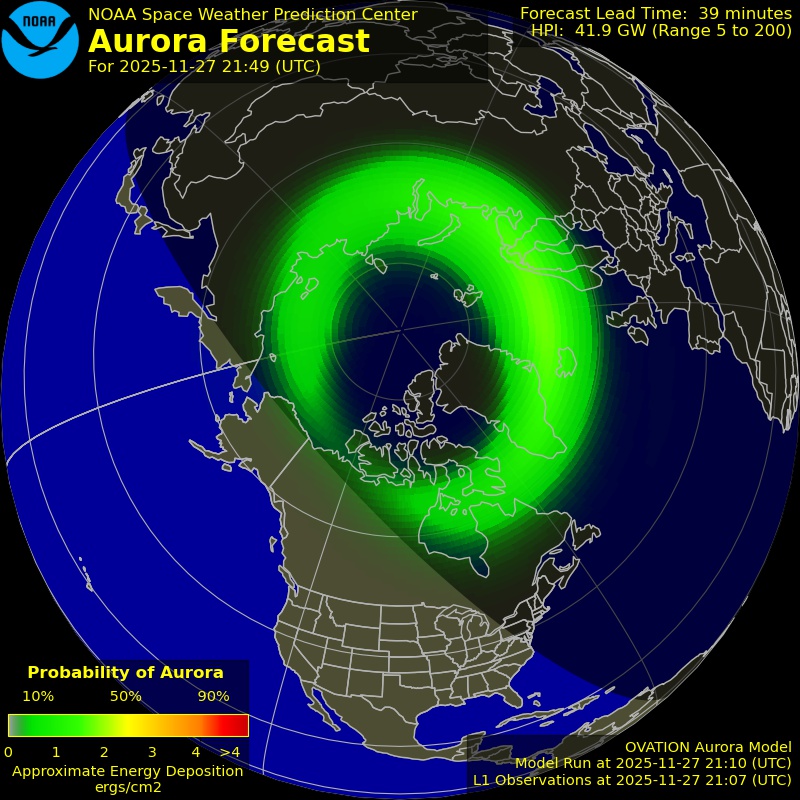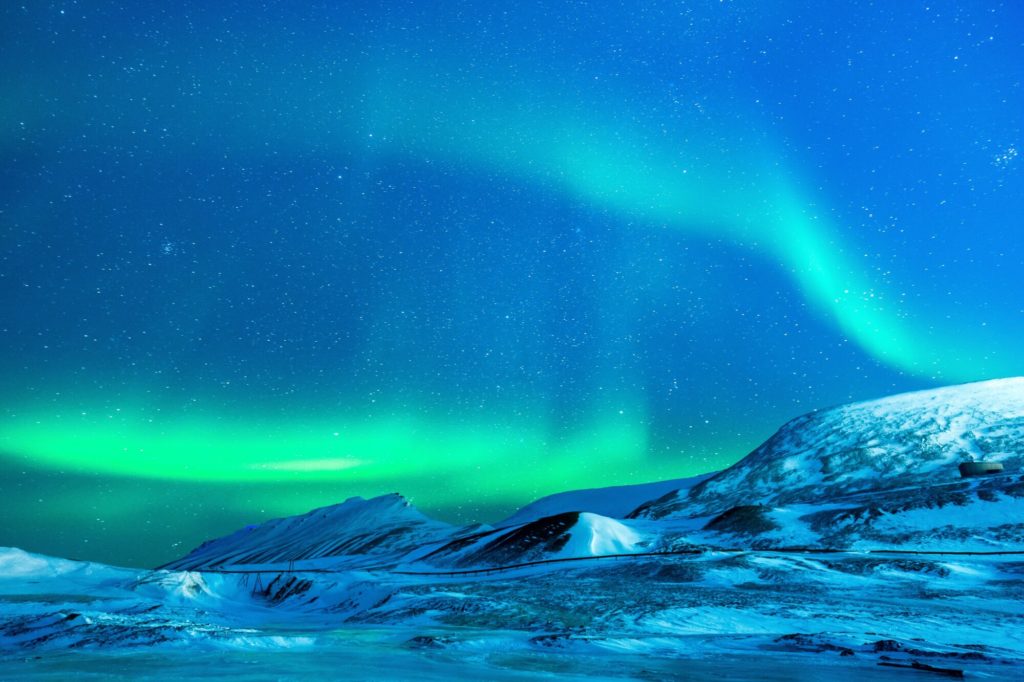Can I see the northern lights in Alaska right now?
You can see the northern lights in Alaska right now if conditions align: you're visiting between August 21 and April 21, the sky is clear, it's between 10 PM and 4 AM, and you're away from city lights. Check the current solar wind data and cloud cover predictions. In Fairbanks, aurora viewing is possible on most clear nights regardless of overall activity levels. Around Anchorage, you'll need stronger geomagnetic conditions for reliable displays. Download aurora alert apps for real-time notifications when activity spikes.
What is the best month to see the northern lights in Alaska?
The best month to see the northern lights in Alaska is either September or March, when the Russell-McPherron effect increases auroral activity around the equinoxes. September offers more comfortable temperatures (-1°C to 10°C / 30-50°F), ice-free lakes for reflections, and newly darkened skies. March provides statistically clearer skies, especially in Interior Alaska, though temperatures range from -23°C to -7°C (-10°F to 20°F). Both months give you approximately double the aurora intensity compared to solstice periods. December through February offer the longest darkness windows but also the coldest conditions and more cloud cover.
How often can you see the aurora in Alaska?
You can see the aurora in Alaska on approximately 243 nights per year in Fairbanks, assuming clear skies. That's roughly 65% of all nights when accounting for the aurora season (August 21 to April 21) and typical weather patterns. Smart planning around weather forecasts maximizes your viewing opportunities. A three-night stay in Fairbanks during aurora season gives you a 90% chance of seeing the lights at least once. Anchorage sees aurora less frequently, requiring moderate to strong geomagnetic activity, which occurs about 100-120 nights per year. The aurora is technically active every night, but summer daylight prevents viewing from May through mid-August.
Where is the best place in Alaska to see the northern lights?
The best place in Alaska to see the northern lights is Fairbanks and locations north of it, due to their position directly beneath the auroral oval at 64.8°N latitude. Specific top spots include Cleary Summit for 360-degree views, Murphy Dome for less-crowded panoramic viewing, and Chena Hot Springs for the unique experience of watching aurora while soaking in natural hot springs. For even darker skies and more intense displays, Coldfoot on the Dalton Highway (67°N) offers extreme isolation 97 kilometers (60 miles) north of the Arctic Circle. Near Anchorage, Glen Alps Trailhead provides the best accessible viewing, while Denali National Park combines aurora with wilderness landscapes. Each location has advantages, Fairbanks maximizes frequency, while remote northern locations maximize intensity.
What time of night are the northern lights most visible?
The northern lights are most visible between 10 PM and 3 AM, with peak activity statistically occurring around midnight in Alaska. However, strong displays can begin as early as 9 PM and continue until dawn. Aurora activity follows patterns tied to Earth's magnetic field orientation to the sun, which creates these nighttime peaks. Plan to stay out for at least 3-4 hours, as displays typically occur in waves (substorms) lasting 30-45 minutes, separated by quiet periods. Patient viewers who wait through calm periods often witness the most spectacular displays during subsequent waves. The hours between 11 PM and 2 AM offer your best statistical chances, but flexibility and patience are essential for aurora viewing success.
Do I need a tour to see the northern lights in Alaska?
You do not need a tour to see the northern lights in Alaska, but tours significantly increase your chances of success, especially for first-time visitors. Independent viewing works well if you have winter driving experience, appropriate cold-weather gear, and understand aurora forecasting. Tours provide critical advantages: expert knowledge of viewing locations based on real-time conditions, heated transportation over potentially dangerous winter roads, cold-weather gear rental, and photography instruction. Tours become especially valuable during extreme cold periods (December-February when temperatures reach -40°C / -40°F), for locations requiring technical driving like Murphy Dome, or if visiting remote spots like Coldfoot. The investment typically ranges from $75-200 per person and eliminates the stress of winter navigation while maximizing viewing opportunities.
How far in advance can you predict the northern lights?
You can predict the northern lights with reasonable accuracy 1-3 days in advance using current forecasting models, with precision increasing as the event approaches. The NOAA Space Weather Prediction Center provides 3-day forecasts based on solar observations, while real-time solar wind monitoring offers 30-60 minute advance warning of incoming auroral activity. For the most accurate forecasts, check predictions within 24 hours of your viewing time. Major solar events (coronal mass ejections) can sometimes be predicted 2-5 days ahead, though exact timing remains uncertain. Real-time solar wind data from satellites positioned between Earth and the Sun provide the most reliable short-term predictions. Download aurora alert apps that monitor these data streams and notify you when conditions become favorable.
Can you see the northern lights in Anchorage?
You can see the northern lights in Anchorage during moderate to strong geomagnetic activity, occurring approximately 100-120 nights per year. Anchorage sits at 61°N latitude, south of the primary auroral oval, so displays require stronger solar activity than locations like Fairbanks. Excellent dark-sky viewing locations are easily accessible 30-45 minutes from the city, including Glen Alps Trailhead, Eagle River Nature Center, and Knik River Valley. When conditions align, aurora displays visible from Anchorage often appear more vibrant and colorful than in Fairbanks because you're viewing them lower on the horizon. Anchorage's aurora season also runs slightly longer (August 7 to May 7) compared to Fairbanks. For the best odds of seeing northern lights during an Alaska trip, combine Anchorage with Fairbanks visits.
What causes the different colors in the northern lights?
The different colors in the northern lights are caused by charged particles from the sun colliding with different atmospheric gases at varying altitudes. Green (the most common color) appears when particles strike oxygen molecules at 97-241 kilometers (60-150 miles) altitude. Red occurs at higher altitudes (above 241 kilometers / 150 miles) from oxygen interactions but appears less frequently because the upper atmosphere is less dense. Blue and purple result from nitrogen collisions at lower altitudes. The altitude and type of gas determine the color you see. The intensity of the solar wind and the energy of particles also influence which colors dominate. During strong auroral displays, you might see multiple colors simultaneously as particles interact with atmospheric layers at different heights.
Is September or March better for northern lights in Alaska?
Both September and March are equally good for northern lights in Alaska due to the Russell-McPherron effect, which increases auroral activity during equinox periods. The choice depends on your priorities. September offers warmer temperatures (-1°C to 10°C / 30-50°F versus -23°C to -7°C / -10°F to 20°F), making outdoor viewing more comfortable. Lakes and rivers remain ice-free, providing reflection opportunities for photography. However, September sees more variable weather patterns as summer transitions to winter. March provides statistically clearer skies, especially in Interior Alaska, and extended darkness gives you more viewing hours per night. March's established winter also means better groomed roads and more tour operators running full schedules. Both months give you approximately double the aurora intensity compared to solstice periods, so personal temperature tolerance should guide your decision.



